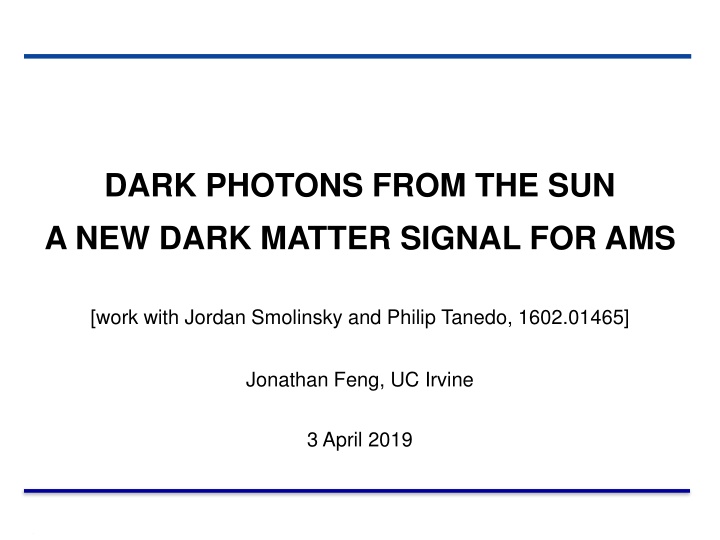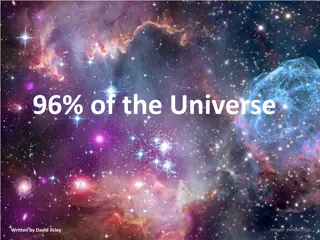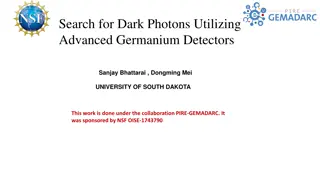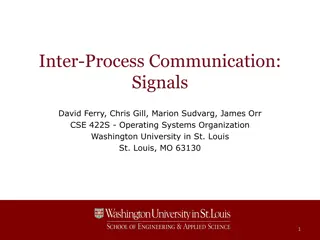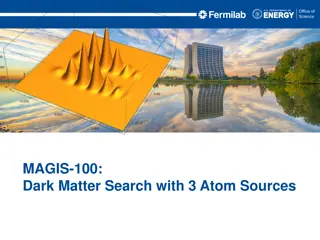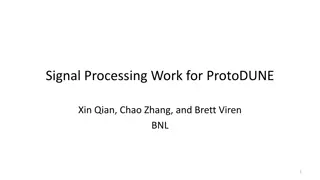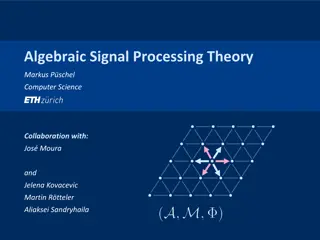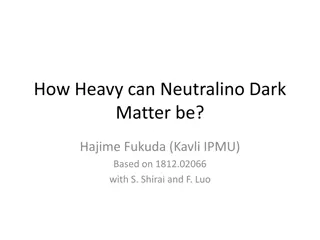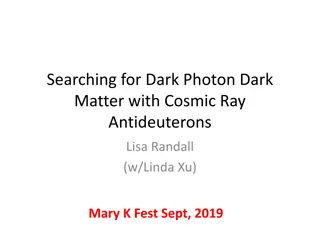DARK PHOTONS FROM THE SUN A NEW DARK MATTER SIGNAL FOR AMS
The study delves into a new dark matter model where dark matter collects in the Sun and annihilates to dark photons, leading to high-energy positrons - a novel signal for AMS. The dark photon, analogous to the SM photon but with distinct characteristics, plays a crucial role in this model. Considered parameters include dark matter mass, dark photon mass, couplings, and positron energy levels, shedding light on the intriguing dark sector of the universe.
Download Presentation

Please find below an Image/Link to download the presentation.
The content on the website is provided AS IS for your information and personal use only. It may not be sold, licensed, or shared on other websites without obtaining consent from the author.If you encounter any issues during the download, it is possible that the publisher has removed the file from their server.
You are allowed to download the files provided on this website for personal or commercial use, subject to the condition that they are used lawfully. All files are the property of their respective owners.
The content on the website is provided AS IS for your information and personal use only. It may not be sold, licensed, or shared on other websites without obtaining consent from the author.
E N D
Presentation Transcript
DARK PHOTONS FROM THE SUN A NEW DARK MATTER SIGNAL FOR AMS [work with Jordan Smolinsky and Philip Tanedo, 1602.01465] Jonathan Feng, UC Irvine 3 April 2019 Feng 1 3 Apr 2019
THE CONVENTIONAL DARK MATTER SIGNAL There is now overwhelming evidence for dark matter. A promising search method is indirect detection, particularly dark matter annihilating to positrons and detected by AMS: DM e+ e- DM The signal is nearly isotropic, coming from the whole halo. Is there a smoking gun signal that makes better use of AMS s remarkable angular resolution? AMS Days at CERN, 2015 Feng 2 3 Apr 2019
DARK SECTOR Dark matter X may be part of a dark sector, with its own matter and forces. Consider a simple example, where the dark sector contains dark matter, but also a U(1) gauge interaction, dark electromagnetism. Dark Sector X, U(1) SM Feng 3 3 Apr 2019
SM-DARK SECTOR INTERACTIONS If the dark matter doesn t interact with us, then it only has gravitational signals. However, generically, there will be a mixing between our U(1) gauge boson A and the dark U(1) gauge boson AD. SM U(1) Dark Sector U(1) M AD A This mixing will be generated by any matter field that has both standard model EM charge and dark EM charge. It is typically small, since it is induced by a loop. Okun (1982), Galison, Manohar (1984), Holdom (1986) Feng 4 3 Apr 2019
DARK PHOTONS We can re-define fields to remove the mixing. The result is two physical particles: our SM photon , and a new particle, the dark photon A . The dark photon is like the SM photon, but It can have a mass mA Its coupling to dark sector particles is large Its coupling to SM particles is suppressed by a small coupling e+ X A A X e- A Feng 5 3 Apr 2019
A NEW DARK MATTER SIGNAL In this dark matter model, dark matter collects in the Sun and then annihilates to dark photons ( dark sunshine ). These can then travel out of the Sun and decay to e+e-. A new DM signal for AMS: high energy positrons from the Sun. Feng 6 3 Apr 2019
SIGNAL CHARACTERISTICS We will consider parameters Dark matter mX ~ 100 GeV 10 TeV Dark photon mA ~ MeV GeV Couplings ~ 10-12 10-6 The typical positron energy is ~100 GeV 10 TeV The size of the DM population at the core of the Sun is ~1 . AMS s angular resolution: from ECAL (and even better with tracker); negligible. The signal is essentially a point source of TeV positrons from the center of the Sun. No background looks like this! Feng 7 3 Apr 2019
MAGNETIC FIELDS In more detail, TeV positrons are bent in the magnetic fields of the Sun and Earth. The Sun s magnetic field is not well understood. Conservatively, we can consider only dark photons that travel far enough before decaying. The Earth s magnetic field is well understood. Assume we can deconvolute for this effect. (But note, without deconvoluting, the signal will not appear point-like.) Feng 8 3 Apr 2019
ISOTROPIC BACKGROUND AND EXPOSURE The background isotropic positron flux from AMS is We consider an energy and angle window that fixes Nbackground = 1 and maximizes signal. Last, of course, the Sun is not always in AMS s field of view. In 924 days, the exposure for E > 50 GeV was The effective area is ~20 cm2, would be 80 times larger if AMS pointed at the Sun continuously. Machate, Gast, Schael for the AMS Collaboration (2016) Feng 9 3 Apr 2019
RESULTS For 3 years of AMS data, AMS probes new regions of parameter space beyond existing constraints. Direct detection constraints are competitive, but model-dependent. Smolinsky, Tanedo, 1701.03168 Feng 10 3 Apr 2019
RESULTS Same as above, but for high exposure (80 times larger). All results can be greatly improved with knowledge of Sun s magnetic field. Feng 11 3 Apr 2019
CONCLUSIONS If dark matter is generalized to a dark sector with its own forces, many new dark matter signals are possible. For AMS, an interesting one is dark sunshine, dark photons from the Sun, which decay to positrons and electrons. Exploits AMS s fantastic angular resolution and event rates. Potentially a smoking gun signal with no astrophysical background. Feng 12 3 Apr 2019
